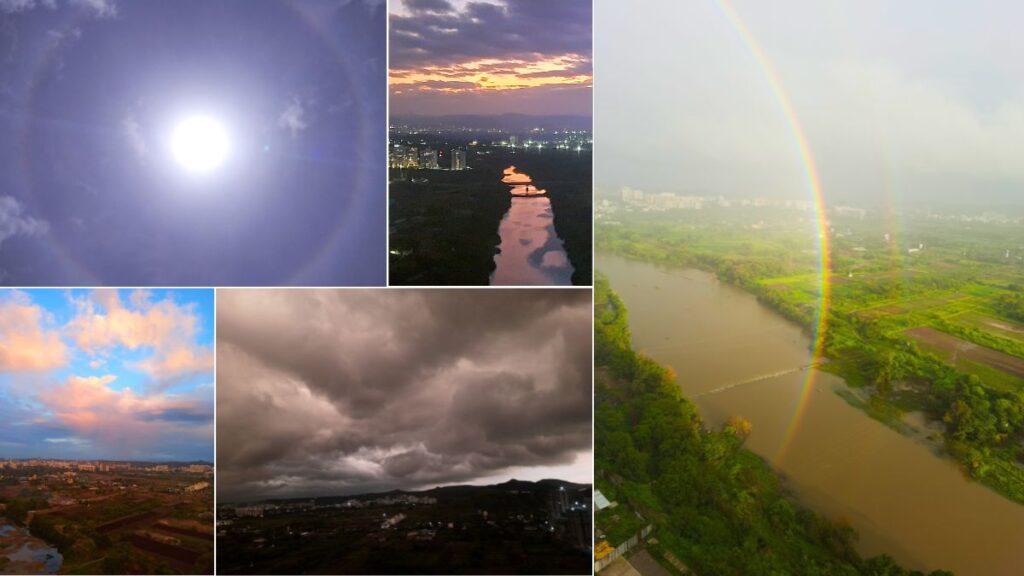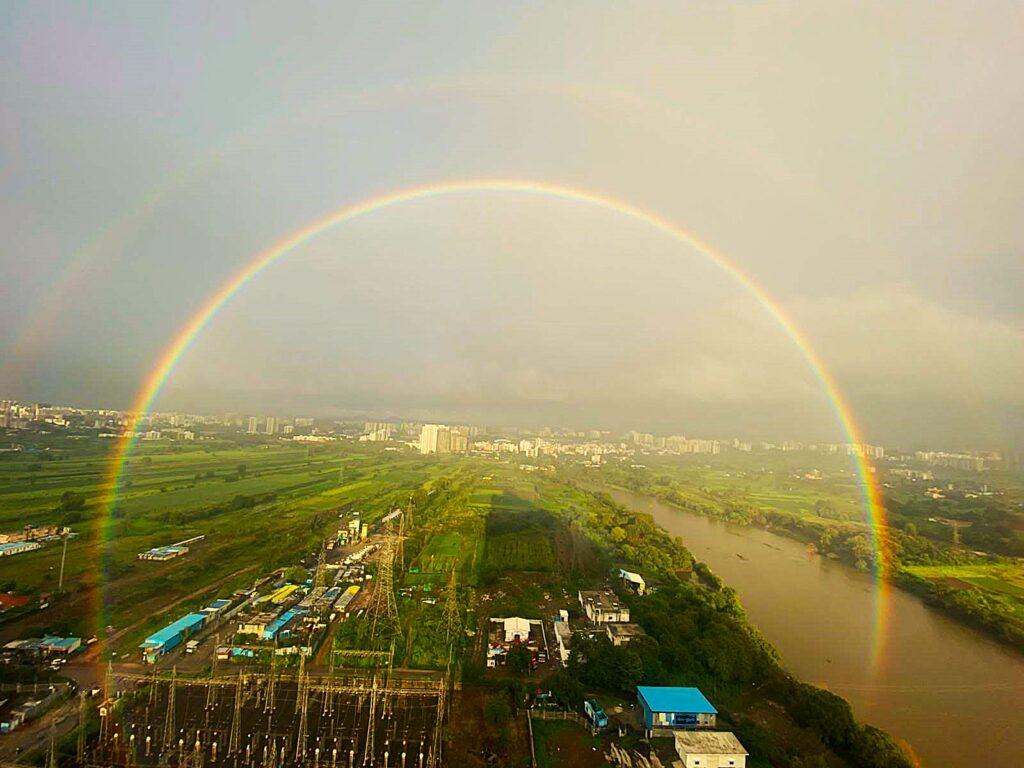As skies of Pune turn into nature’s canvas with rainbows and a kaleidoscope of colors, discover why rainbows are formed

For the past couple of days, skies of Pune have turned into nature’s canvas. Exciting cloud patterns and a mélange of colors enhance the beauty of the sky, especially at dawn and dusk.
Due to the recent spell of rains in the city, the dust has settled and the skies have been painting beautiful patterns for the Punekars to feast their eyes on.

Lately, the skies of Pune have been coming alive with nature’s artistic brush strokes. People have been feasting their eyes on rainbows, mystical clouds and the riot of colors.
Not just the dusk, but any time of the day, the skies of Pune are playing with colors and presenting breathtaking sights for the parched eyes of the city dwellers after an unusually hot summer this year.

Why and How Rainbows are Formed?
According to Royal Meteorological Society, rainbows are formed when light from the sun is scattered by water droplets (e.g. raindrops or fog) through a process called refraction. Refraction occurs when the light from the sun changes direction when passing through a medium denser than air, such as a raindrop. Once the refracted light enters the raindrop, it is reflected off the back and then refracted again as it exits and travels to our eyes.
How does refraction result in a rainbow’s colors?

Sunlight is made of many different wavelengths, or colours, that travel at different speeds when passing through a medium. This causes the white light to split into different colours. Longer wavelengths appear as red and shorter wavelengths appear as blue or violet. We see the colour spectrum of the rainbow as the light passes through the raindrop at different angles of approximately two degrees, from red to violet. This is not a true spectrum as the colours mix and blur throughout the spectacle. The angle of scatter from raindrops is different for everyone which means that every rainbow is unique to the observer.
ALSO READ | Five beautiful hill stations within 150 km of Pune to explore this monsoon
However, for the observer to see a rainbow, they must be in a specific position relative to the sun and water droplets –
- The observer must be positioned, so the sun is behind them.
- The lower the sun in the sky, the more of an arc of a rainbow the observer will see – it must be less than 42° in the sky.
- Water droplets such as rain or fog must be in front of the observer.
The mesmerizing skies of Pune have been treating the citizens with soul soothing vistas for the past few days. Keep a watch for such vistas, especially during dusk and dawn.









